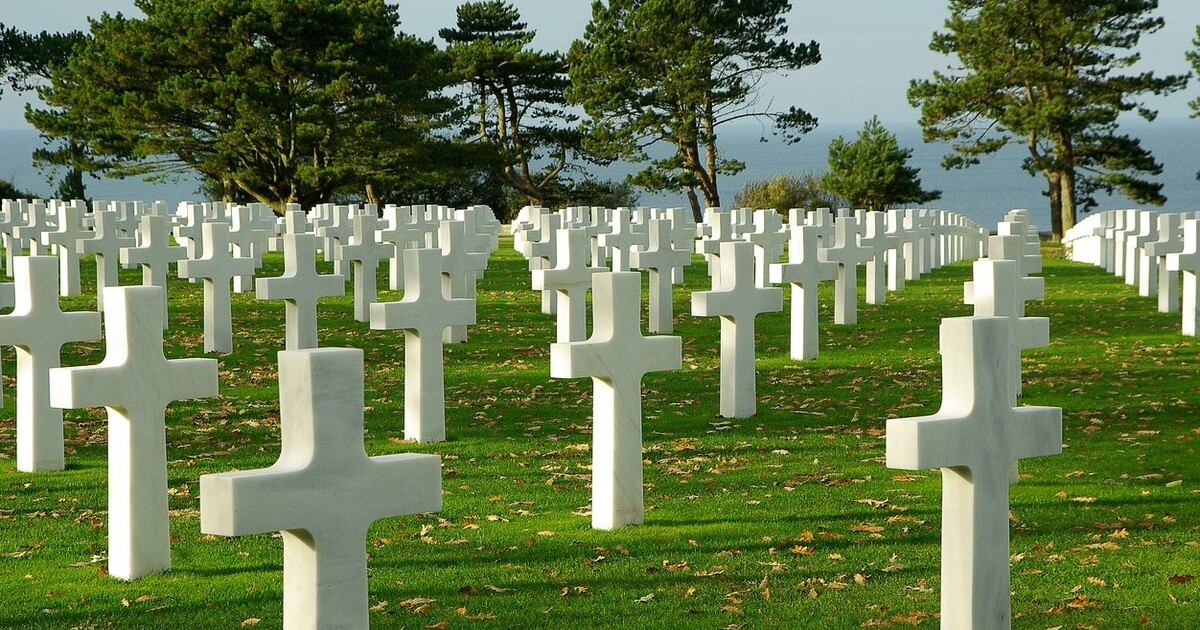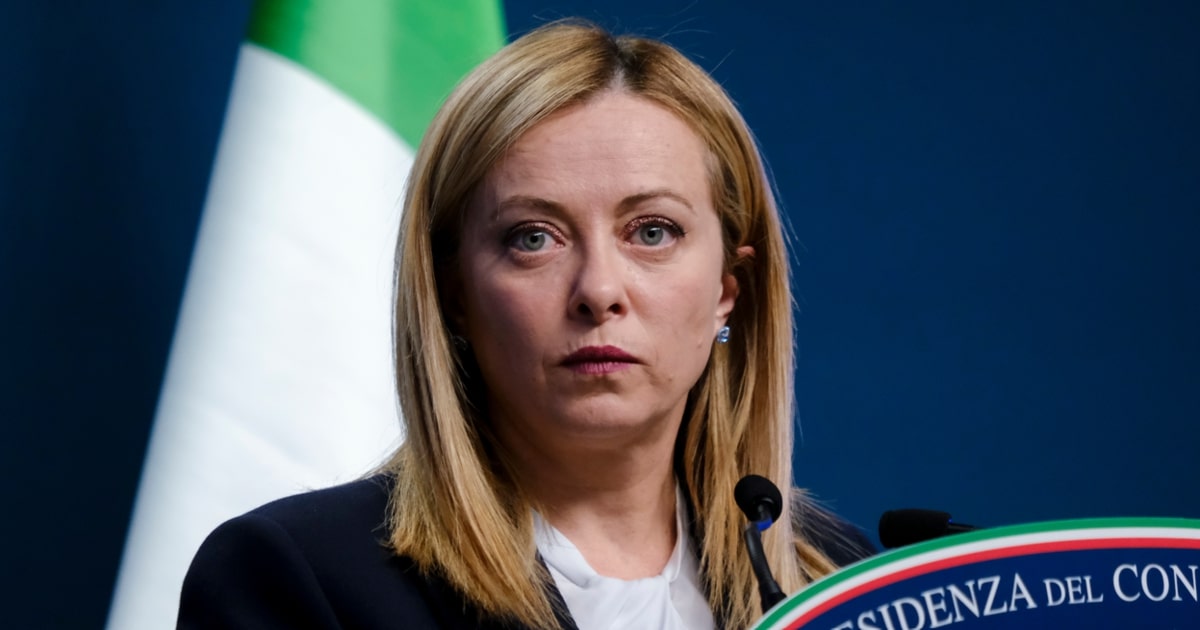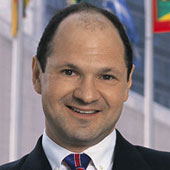Putin and the Long Shadow of the Molotov-Ribbentrop Pact
D-Day marked the beginning of the end of Hitler’s empire. But with Russia’s ongoing war in Ukraine, it also underscores that the job begun in Normandy eighty years ago remains only half-done.
June 5, 2024

A Strategic Assessment Memo (SAM) from the Global Ideas Center
You may quote from this text, provided you mention the name of the author and reference it as a new Strategic Assessment Memo (SAM) published by the Global Ideas Center in Berlin on The Globalist.
On June 6, World War II allies will mark another anniversary of D-Day on the beaches of Normandy
There will be speeches about the victory over Nazism, the destruction of Hitler’s Reich and the decisive defeat of tyranny and aggression.
Among the victors there will likely be a delegation from Russia. Their presence at this event, even while it is waging a brutal war against Ukraine, will serve to underscore the fact that the job begun in Normandy eighty years ago remains only half-done.
The Molotov-Ribbentrop pact
On August 23, 1939, the Soviet Union and Germany signed a non-aggression agreement known by the names of their foreign ministers as the Molotov-Ribbentrop Pact.
It included a secret protocol, in which Adolf Hitler and Joseph Stalin divided Poland into “spheres of influence” – which, in light of Germany’s impending attack on Poland, were in fact their zones of occupation.
On September 17, with the Poles still fighting the Germans, the Red Army invaded Poland, annexing its eastern territories. In March 1940, 22,000 Polish officers were executed by Stalin’s NKVD in the forest outside Katyn.
Double standards
Having guaranteed Polish sovereignty, Britain and France declared war on Germany on September 3, 1939, but not on the Soviet Union, even though it was Hitler’s full partner in wiping Poland off the map.
Then, once Hitler turned around and invaded Russia in June 1941, the Soviet Union was admitted into the anti-Hitler coalition, got massive assistance of arms and materiel from the United States and ended up doing the bulk of the fighting.
Hitler lost, but the Molotov-Ribbentrop Pact survived. Stalin got to keep the parts of Poland he had annexed, as well as Latvia, Estonia and Lithuania, Bessarabia and portions of Finnish territory as had been specified in its secret protocols. All those lands became part of the Soviet Union.
In the final years of the 20th century, Communism in Europe collapsed, and Moscow lost its empire in Eastern Europe – and then almost all the territories acquired as part of the Molotov-Ribbentrop Part. But, even though the tangible fruits of that deal disappeared, its spirit endures.
Putin is the new Stalin
Looking at Putin’s Russia, there is a striking continuity with Stalin’s Soviet Union which signed the pact with the Nazis.
Only the names are different. Putin is now President, not Secretary General, the Communist Party is called United Russia, the rubber-stamp Supreme Soviet has become the rubber-stamp State Duma, Pravda and Izvestia have been replaced by television channels and the repressive apparatus that permeates the entire society is now known as the FSB rather than the NKVD or the KGB of old.
Little wonder then that Putin has been able to accumulate personal power as great as Stalin’s –while changing virtually nothing in the political system.
Living in the past
In relation to Russia’s neighbors, Putin is acting as though he is still living in the reality of the secret protocols of the Molotov-Ribbentrop Pact and taking a cue from Hitler.
Just as Nazi Germany effected the Anschluss with Austria and invaded Czechoslovakia to gather all Germans in one state, so Putin annexed Crimea and eastern Ukraine – claiming he is saving ethnic Russians from Ukrainian tyranny.
The full-scale invasion of Ukraine in February 2022 was justified by the military threat it presented to Russia – just as Hitler called his attack on Poland in 1939 a “Defensive War.” Much like Hitler, who denied Poland’s right to exist, Putin has refused to recognize Ukrainian sovereignty.
In other words, even though one signatory of the Molotov-Ribbentrop Pact, Nazi Germany, is no more, the other is behaving as though it is still very much in effect.
Yet more parallels
Other similarities abound. Stalin’s Red Army was woefully unprepared at the start of World War II. The so-called “Winter War” against Finland was a disaster, and so were the first six months of the German invasion.
Several million Soviet soldiers were killed, wounded or taken prisoner. However, in the ensuing four years, the Soviets learned war and, by 1945, had 10 million men under arms.
The same trajectory is evident in the war in Ukraine. The Russians were defeated in their attempt to take Kiev, and then pushed back later in 2022. However, they too are learning.
They are producing weapons domestically, importing them and finding ways around Western sanctions. They have sufficient manpower, and will mobilize hundreds of thousands more if need be.
Ukraine: Holding on by the skin of its teeth
Ukraine’s situation, meanwhile, is deteriorating. Even with recent military aid packages from the United States and Europe, the quantity and quality of weapons it gets are just enough not to lose.
But what it needs more critically – and what it will not be able to easily get – is soldiers. Given the kind of war of attrition Putin is planning to wage, sooner or later Ukrainians will start to retreat.
Had NATO sent troops to Ukraine in 2022, Putin would have been kicked out of Ukrainian territory. But Western politicians were afraid of engaging Russian troops – and they still are.
What next?
What next then? Putin’s occupation of Ukraine is not something Poland, Lithuania and possibly other countries in the region will be willing to contemplate. They will have to put boots on the ground – but their soldiers will be propping up a weakened Ukrainian force while confronting a stronger, battle-harden Russian adversary.
NATO will still face Putin directly, but more blood will be shed – and success will by no means be assured.
This once more mirrors what happened in the runup to World War II. As historian Timothy Snyder maintains, the surrender of Czechoslovakia in 1938 changed the course of history.
Not only was Germany at the time too weak to defeat the Czechs but, by occupying the country, Hitler got access to some of the most advanced industrial capacity in Europe – including armaments producers Skoda and Tatra.
And that was when Stalin decided that he had better make a deal with Hitler which, perversely, is still informing Russia’s foreign policy today.
Takeaways
June 6 marks another anniversary of D-Day – and the beginning of the end of Hitler’s aggression in Europe. But with Russia’s ongoing war in Ukraine, it also underscores that the job begun in Normandy eighty years ago remains only half-done.
On August 23, 1939, the Soviet Union and Germany signed a non-aggression agreement – the Molotov-Ribbentrop Pact. Hitler and Stalin divided Poland into “spheres of influence,” which in fact were their zones of occupation.
Hitler lost, but the Molotov-Ribbentrop Pact survived. Stalin got to keep the parts of Poland he had annexed, as well as Latvia, Estonia, Lithuania, Bessarabia and portions of Finnish territory. All those lands became part of the Soviet Union.
Communism in Europe collapsed, and Moscow lost almost all the territories acquired as part of the Molotov-Ribbentrop Part. But even though the tangible fruits of that deal disappeared, its spirit endures.
Only the names are different. Putin is now President not Secretary General, the Communist Party is called United Russia, the rubber-stamp Supreme Soviet has become the rubber-stamp State Duma and the NKVD or KGB is now called the FSB.
Just as Nazi Germany effected the Anschluss with Austria and invaded Czechoslovakia to gather all Germans in one state, so Putin annexed Crimea and eastern Ukraine claiming he is saving ethnic Russians from Ukrainian tyranny.
Had NATO sent troops to Ukraine in 2022, Putin would have been kicked out of Ukrainian territory. But Western politicians were afraid of engaging Russian troops – and they still are.
Putin’s occupation of Ukraine is not something Poland, Lithuania or other countries will be willing to contemplate. They will have to put boots on the ground – but their soldiers will be propping up a weakened Ukrainian force while confronting a stronger Russian adversary.
A Strategic Assessment Memo (SAM) from the Global Ideas Center
You may quote from this text, provided you mention the name of the author and reference it as a new Strategic Assessment Memo (SAM) published by the Global Ideas Center in Berlin on The Globalist.
Read previous

Just The Facts
Giorgia Meloni’s Italy
June 3, 2024

